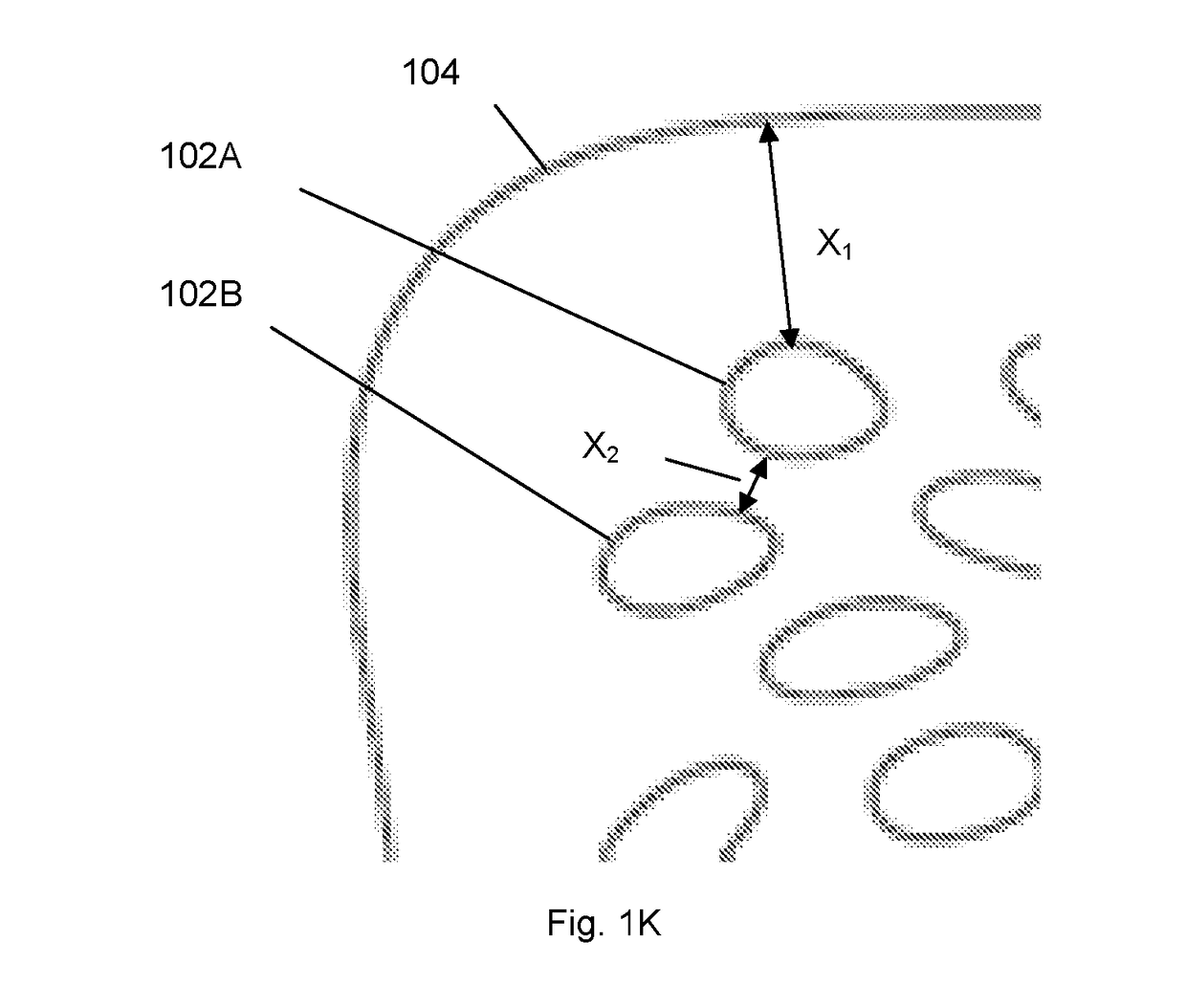Compositions for application to wounds
a composition and wound technology, applied in the field of compositions and wound dressings, can solve the problems of reducing the flexibility of the dressing, affecting the fluid handling ability of the dressing, and affecting the comfort of the user, etc., and achieves the effects of improving the fluid handling ability, simple construction, and reducing the risk of injury
- Summary
- Abstract
- Description
- Claims
- Application Information
AI Technical Summary
Benefits of technology
Problems solved by technology
Method used
Image
Examples
example 1
Silicone-Containing Dressing—‘Square Shape’ (013815e)
[0142]A central array of 27 apertures was cut into a 75 mm×75 mm sheet of trilaminate silicone adhesive (RAP10449A, Raleigh Coatings) comprising a 30 μm polyurethane film having on one side a 30 g / m2 layer of acrylic pressure sensitive adhesive and on the other side a 145 g / m2 layer of silicone gel. The array of apertures was substantially as shown in FIG. 1A. The mean area occupied by the apertures was approximately 29 mm2. The perimeter of the array was 55 mm long by 55 mm wide. The apertures ranged in size and shape but were no smaller than 5 mm long by 5 mm wide. A 75 mm×75 mm sheet of 30 μm polyurethane film (Inspire 2304, Coveris) was laminated onto the acrylic side of the pre-cut trilaminate silicone adhesive, ensuring all liners were removed.
example 2
Perforated Silicone with PU Backing, ‘Square Shape’ (034615a; Comparative Example)
[0143]A 75 mm×75 mm sheet was taken of perforated silicone, with perforations 2.8 mm in diameter (Soft Pro 6054, Scapa Healthcare), comprising a 40 μm polyurethane film having on one side a 40 g / m2 layer of acrylic medical grade adhesive and on the other side a layer of transparent medical grade silicone gel. A 75 mm×75 mm sheet of 30 μm polyurethane film (Inspire 2304, Coveris) was laminated onto the acrylic side of the perforated silicone trilaminate, ensuring all liners were removed.
example 3
Silicone-Containing Dressing—‘Oval Shape’ (034515a)
[0144]A linear array of 9 apertures was cut into a 150 mm×80 mm oval of trilaminate silicone adhesive (RAP10449A, Raleigh Coatings) comprising a 30 μm polyurethane film having on one side a 30 g / m2 layer of acrylic pressure sensitive adhesive and on the other side a 145 g / m2 layer of silicone gel. The perimeter of the array was 115 mm long and 54 mm wide. The apertures ranged in size and shape but were no smaller than 10 mm long and 25 mm wide. The array of apertures was substantially as shown in FIG. 1B. The mean area occupied by the apertures was approximately 306 mm2. A 150 mm×80 mm oval of 30 μm polyurethane film (Inspire 2304, Coveris) was laminated onto the acrylic side of the pre-cut trilaminate silicone adhesive, ensuring all liners were removed.
PUM
| Property | Measurement | Unit |
|---|---|---|
| area | aaaaa | aaaaa |
| water absorption | aaaaa | aaaaa |
| water absorption | aaaaa | aaaaa |
Abstract
Description
Claims
Application Information
 Login to View More
Login to View More - R&D
- Intellectual Property
- Life Sciences
- Materials
- Tech Scout
- Unparalleled Data Quality
- Higher Quality Content
- 60% Fewer Hallucinations
Browse by: Latest US Patents, China's latest patents, Technical Efficacy Thesaurus, Application Domain, Technology Topic, Popular Technical Reports.
© 2025 PatSnap. All rights reserved.Legal|Privacy policy|Modern Slavery Act Transparency Statement|Sitemap|About US| Contact US: help@patsnap.com



